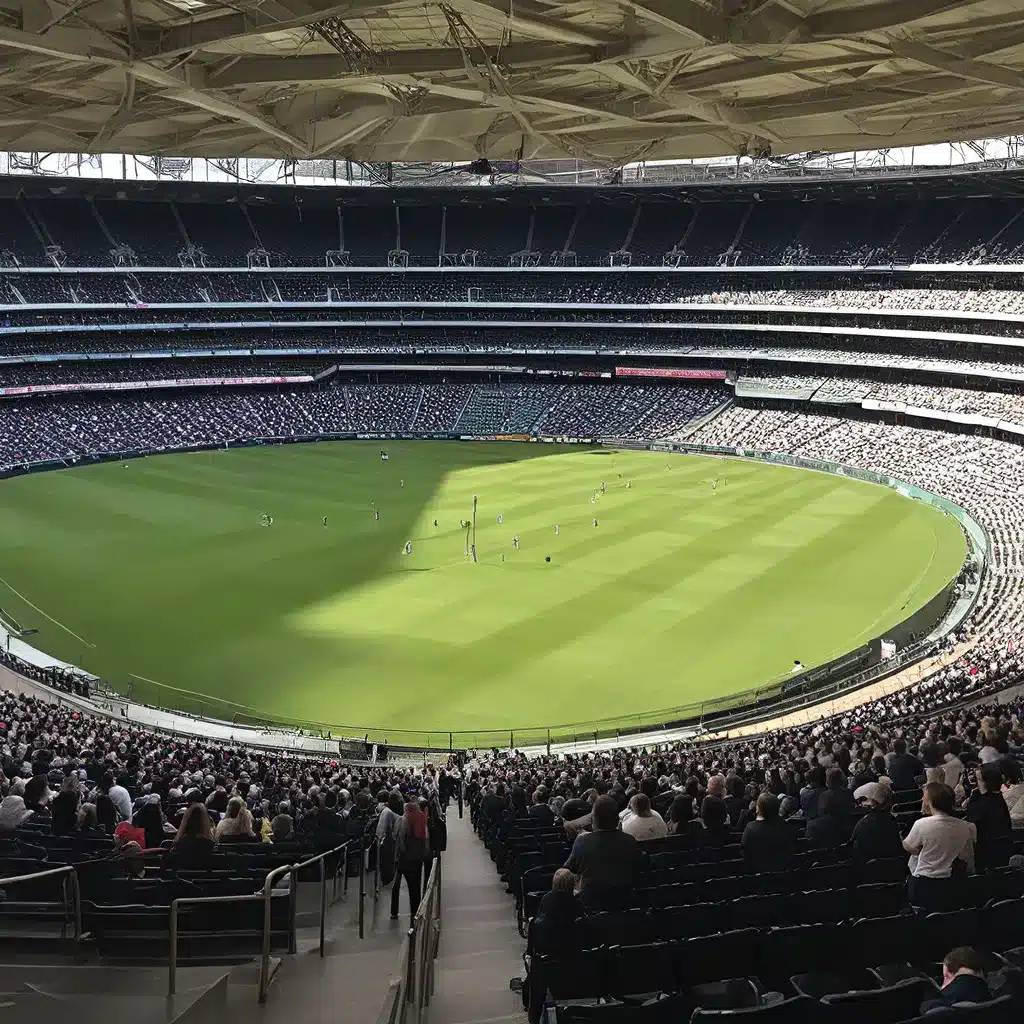
The Melbourne Cricket Ground (MCG), often referred to as the ‘G, is a truly iconic sporting venue that has been at the heart of Melbourne’s vibrant culture for over 160 years. Nestled in the heart of the city, this legendary stadium has witnessed some of the most memorable moments in the history of sports, from thrilling cricket matches to electrifying Australian rules football games.
The Storied History of the MCG
The origins of the MCG can be traced back to 1853, when the Melbourne Cricket Club (MCC) was granted 10 acres of land by the government to establish a cricket ground. Over the next few decades, the MCG underwent a series of transformations, with the construction of grandstands, pavilions, and other facilities to accommodate the growing popularity of the sport.
One of the defining moments in the MCG’s history came in 1877, when it hosted the first-ever Test match between Australia and England. This historic match marked the beginning of a long-standing rivalry between the two cricketing powerhouses, with the MCG serving as the stage for many iconic clashes over the years.
As the decades passed, the MCG’s significance expanded beyond just cricket. In 1897, the venue hosted its first Australian rules football match, cementing its status as a multi-purpose sports ground that could cater to a wide range of sporting events. This versatility was further demonstrated when the MCG was selected to host the 1956 Summer Olympics, becoming the first venue outside of Europe to host the prestigious event.
The MCG’s Architectural Evolution
The MCG’s physical appearance has undergone numerous transformations over the years, reflecting the changing architectural styles and technological advancements of the time. The original grandstand, constructed in 1854, was a simple wooden structure, but as the stadium’s popularity grew, so did the need for more modern and expansive facilities.
In the late 19th century, the MCG underwent a major renovation, with the construction of the iconic Members Pavilion, which still stands today as a testament to the ground’s rich heritage. The early 20th century saw the addition of the Great Southern Stand, which was designed in the Art Deco style and remains a prominent feature of the stadium’s skyline.
The most recent major renovation of the MCG took place in the early 2000s, with the construction of the Northern Stand and the redevelopment of the previously existing stands. This multi-year project, costing over $400 million, transformed the stadium into a state-of-the-art facility, complete with modern amenities, improved sightlines, and enhanced accessibility for spectators.
The MCG’s Role in Australian Sports Culture
The Melbourne Cricket Ground’s significance extends far beyond its physical attributes. It has become an integral part of Australian sports culture, serving as a hub for some of the country’s most beloved sporting traditions.
The Boxing Day Test match, held annually on December 26th, is one of the MCG’s most anticipated events, drawing crowds from all over the country to witness the start of the highly anticipated cricket season. The stadium’s association with the Australian rules football Grand Final, the culmination of the Australian Football League (AFL) season, is equally legendary, with the venue’s electric atmosphere and passionate fans adding to the excitement of the event.
Beyond its role as a sporting venue, the MCG has also been a stage for cultural and political events, hosting concerts, festivals, and even political rallies over the years. The stadium’s ability to bring people together, regardless of their interests or backgrounds, is a testament to its enduring significance in the hearts and minds of Melburnians and Australians alike.
Exploring the MCG’s Facilities and Attractions
Visiting the Melbourne Cricket Ground is an experience that transcends the mere act of attending a sporting event. The stadium offers a range of interactive exhibits and behind-the-scenes tours that allow visitors to delve deeper into its rich history and inner workings.
The National Sports Museum, located within the MCG, is a must-visit attraction for sports enthusiasts. It features a vast collection of memorabilia, interactive displays, and multimedia exhibits that celebrate the achievements of Australian athletes and the country’s sporting heritage.
For those seeking a more immersive experience, the MCG Tour offers visitors a unique opportunity to explore the stadium’s inner sanctum, including the players’ change rooms, the media center, and the hallowed turf itself. This guided tour provides a fascinating insight into the day-to-day operations of one of the world’s most iconic sporting venues.
The MCG’s Ongoing Significance
As the Melbourne Cricket Ground continues to evolve, its significance as a cultural and sporting icon shows no signs of waning. The stadium’s ability to adapt to the changing needs of its visitors, while preserving its rich history, has been a key factor in its enduring popularity.
Today, the MCG stands as a testament to the power of sports to bring people together, transcending boundaries and uniting communities. Whether you’re a passionate cricket fan, a diehard Australian rules football enthusiast, or simply someone who appreciates the grandeur of sports architecture, a visit to the Melbourne Cricket Ground is an experience that is sure to leave a lasting impression.
For those seeking to explore more of the world’s most iconic stadiums, be sure to check out Old Stadium Journey, a comprehensive resource that celebrates the rich histories and unique characteristics of these remarkable sporting venues.

